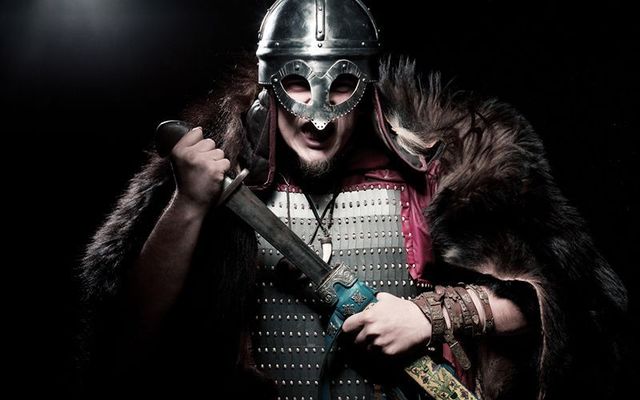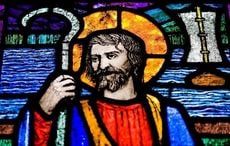Twelve boats, dating from 2,500 BC to the 11th century AD, along with other Viking artifacts were discovered in Lough Corrib in Connemara, Galway in 2014.
Archaeologists used radiocarbon dating to establish that one of the boats dates from 2,500 BC. Other items that were found in 2014 include several battle axes and other weapons.
The ancient items were discovered by Captain Trevor Northage, a marine surveyor mapping the lake to update British admiralty charts, in 2014. The Underwater Archaeology Unit (UAU) from the National Monuments Service then carried out a series of investigative dives.
The 4,500-year-old log boat settled into the mud when it sank and was covered over time. A mixture of organic sediment and lake water assisted in the preservation process. Even the seats in the boats are preserved.
The three Viking-style battle axes will form a centerpiece for the National Museum of Ireland’s Battle of Clontarf commemoration exhibition, marking the 1,000th anniversary of the battle and the death of King Brian Boru.
The weapons, including bronze spearheads and a rare wooden spear, have been recovered for conservation by the National Museum. As yet, there are no plans to raise the boats.
The oldest of the vessels is the Annaghkeen log boat, which is 4,500 years old, close to the age of the Pyramids of Giza in Egypt. Northage pointed out while speaking to the Irish Times, that it had been at the bottom of the lough for 3,500 years when the Vikings arrived.
The 12-meter boat is very similar to the Lurgan boat found in 1902 and the Carrowneden boat found near Ballyhaunis, in County Mayo, in 1996.
UAU archaeologist Karl Brady said, “The Annaghkeen boat was made from a very big tree, and it took a lot of skill and effort to make it.
“The fact that all three boats were located within 30 miles of each other would suggest that they were made by the one builder, or that there was a vogue for early Bronze Age boats of this type.”
Brady believes that another boat, dating from the 11th or 12th century, found near Carrowmoreknock on the Lough, may have been on a raid when it sank. They believe the warriors were Irish.

Love Irish history? Share your favorite stories with other history buffs in the IrishCentral History Facebook group.
Ireland’s Minister for Arts, Heritage and the Gaeltacht at the time, Jimmy Deenihan, called the find “exceptional” and said all the artifacts are protected on the National Monuments Act.
He also commented on the fact that the artifacts provide “a unique insight into a wide range of prehistoric and medieval activities, including raiding, hunting, woodworking, boat building, trade, travel, and transport.”
* Originally published in April 2014. Updated in September 2023.




Comments